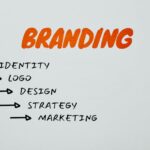Maximizing Lead Quality with LinkedIn Lead Generation is not merely about accumulating a large volume of contacts; it’s a sophisticated strategic endeavor focused on identifying, attracting, and converting prospects who are most likely to become valuable, long-term customers. This demands a deep understanding of your ideal customer, meticulous targeting, compelling content creation, and a robust system for nurturing and qualifying leads once they enter your funnel.
Understanding the Essence of High-Quality Leads
High-quality leads are not just individuals who express interest; they are prospects who closely align with your Ideal Customer Profile (ICP), possess a demonstrated need for your product or service, have the budget and authority to make purchasing decisions, and are at a stage in their buying journey where engagement with your solution is timely and relevant.
Defining Your Ideal Customer Profile (ICP): Before any LinkedIn lead generation efforts commence, a crystal-clear understanding of your ICP is paramount. This goes beyond basic demographics. It involves:
- Firmographics: Industry, company size (revenue, employee count), location, public/private status, growth stage.
- Technographics: What technologies or software do they currently use (or avoid)? This can indicate compatibility or pain points.
- Psychographics: Corporate culture, values, strategic priorities, common challenges, desired outcomes.
- Trigger Events: What internal or external changes often prompt them to seek solutions like yours? (e.g., new funding, leadership changes, regulatory shifts, market disruptions).
Buyer Personas within the ICP: While the ICP describes the ideal company, buyer personas detail the individuals within those companies you need to reach. For each persona, outline:
- Role & Responsibilities: Their specific job title, department, and key functions.
- Goals & Objectives: What are they trying to achieve in their role, department, or company?
- Pain Points & Challenges: What obstacles hinder their success? What problems keep them up at night?
- Information Sources: Where do they go for information and professional development? (LinkedIn groups, industry publications, specific influencers).
- Decision-Making Power: Are they an influencer, decision-maker, budget holder, or end-user?
- Objections: What are their likely reservations or concerns about adopting a new solution?
Why Quality Trumps Quantity: Focusing on quality over quantity directly impacts sales efficiency, ROI, and long-term business health.
- Reduced Sales Cycle: High-quality leads are typically more educated, better qualified, and closer to a purchase decision, shortening the sales cycle.
- Higher Conversion Rates: Leads that truly fit your ICP convert at a significantly higher rate from MQL (Marketing Qualified Lead) to SQL (Sales Qualified Lead) to closed-won deals.
- Optimized Resource Allocation: Sales teams spend less time chasing unqualified leads, freeing them to focus on promising opportunities. This improves morale and productivity.
- Lower Customer Acquisition Cost (CAC): Efficient lead generation and sales processes directly contribute to a lower CAC, improving profitability.
- Increased Customer Lifetime Value (CLTV): Customers acquired from high-quality leads often have a better fit with your product/service, leading to higher satisfaction, longer retention, and increased upsell/cross-sell opportunities.
- Accurate Forecasting: A pipeline filled with qualified leads provides a more reliable basis for sales forecasting and resource planning.
- Enhanced Brand Reputation: Engaging with the right audience helps establish your brand as a relevant and valuable solution provider, rather than a spammer.
The Cost of Low-Quality Leads: Neglecting lead quality can incur significant hidden costs.
- Wasted Sales Time: Sales representatives spend valuable hours on calls, demonstrations, and follow-ups with prospects who are not a good fit, lack budget, or have no real need.
- Increased Sales Cycle Length: Dealing with unqualified leads stretches out the overall sales process, delaying revenue generation.
- Higher Customer Churn: Even if a low-quality lead is converted, they are more likely to churn quickly due to a poor fit, leading to negative ROI.
- Damaged Team Morale: Repeated rejection and unproductive efforts can lead to burnout and demotivation within the sales team.
- Inaccurate Data: Flooding your CRM with low-quality leads skews your sales pipeline data, making it difficult to analyze performance accurately and forecast future revenue.
- Increased Marketing Spend Inefficiency: Marketing budgets are wasted on campaigns that attract the wrong audience, leading to poor campaign performance and misinformed strategic decisions.
Leveraging LinkedIn’s Unique Position for Lead Quality
LinkedIn, with over 900 million members in more than 200 countries and territories worldwide, is the preeminent professional networking platform. Its unique data depth and targeting capabilities make it an unparalleled resource for B2B lead generation, specifically for achieving high-quality leads.
Professional Demographics and Data Richness: Unlike other social platforms, LinkedIn’s core purpose is professional networking and career development. This means users proactively share highly relevant professional data:
- Job Titles and Functions: Precise roles, seniority levels, and responsibilities.
- Company Information: Current and past employers, industry, company size, revenue estimates.
- Skills and Endorsements: Verified professional skills and expertise.
- Educational Background: Degrees, institutions, and fields of study.
- Professional Interests and Groups: Insights into their professional focus, challenges, and aspirations.
- Connections and Networks: Who they know and who influences them.
- Content Engagement: What articles, posts, and topics they interact with, revealing their interests and pain points.
This wealth of self-reported, consistently updated data forms the bedrock for highly precise targeting.
Unmatched Targeting Capabilities: LinkedIn’s advertising and sales tools offer granular targeting options that allow businesses to pinpoint their ICP and buyer personas with remarkable accuracy. This precision directly contributes to lead quality by ensuring your message reaches the most relevant audience.
Strategic Foundation for Quality Lead Generation
A robust strategy is the cornerstone of effective LinkedIn lead generation. It involves internal alignment and external market understanding.
Aligning Sales and Marketing for a Unified Approach: The quality of leads is a shared responsibility. Sales and marketing teams must be intrinsically linked.
- Shared Definitions: Agree on what constitutes an MQL and an SQL. Define lead scoring criteria collaboratively.
- Joint ICP and Persona Development: Marketing builds campaigns to attract these personas, and sales provides feedback on their actual fit and readiness.
- Feedback Loops: Establish regular communication channels. Sales provides insights on lead quality (what’s working, what’s not), and marketing adjusts strategies accordingly. This continuous feedback is crucial for iterative improvement.
- Service Level Agreements (SLAs): Formalize expectations regarding lead volume, lead quality, follow-up times, and conversion rates between the two departments.
- Unified CRM System: Ensure seamless lead handoff and tracking from initial engagement to closed-won deals.
Leveraging LinkedIn Sales Navigator for Precision Targeting
LinkedIn Sales Navigator is an indispensable tool for B2B sales professionals and marketers focused on high-quality lead generation through direct outreach and account-based strategies. Its advanced search and filtering capabilities are unparalleled.
Advanced Search Filters for Granular Prospecting: Sales Navigator’s search filters allow you to build highly specific lead and account lists that align perfectly with your ICP.
- Company Filters:
- Industry: Target specific sectors (e.g., SaaS, Healthcare, Manufacturing).
- Company Size (Employee Count): Filter by employee ranges, often a strong indicator of company maturity and budget.
- Company Headquarters: Geographically focus your efforts.
- Company Type: Public, private, non-profit, educational.
- Company Growth: Filter by employee growth percentage (last 12 months) to identify fast-growing companies likely in need of new solutions.
- Fortune Ranking/Revenue: Directly target high-value accounts.
- Job Role and Seniority Filters:
- Job Title: Specific titles (e.g., “VP of Marketing,” “Chief Financial Officer”). Use boolean searches for variations.
- Seniority Level: Target decision-makers (e.g., Owner, VP, CXO, Director) or influencers.
- Function: Department or functional area (e.g., Marketing, Sales, Human Resources, Operations).
- Years in Current Role/Current Company: Identify stable or recently promoted individuals.
- Years of Experience: Target seasoned professionals.
- Personal and Behavioral Filters:
- Location: Geographical targeting down to specific cities or regions.
- Keywords: Search within profiles for specific skills, technologies, or interests.
- Groups: Target members of specific LinkedIn Groups where your ICP congregates.
- Shared Connections: Leverage mutual connections for warm introductions.
- Interests: Identify individuals following specific topics, influencers, or companies relevant to your solution.
- Past Companies: Find individuals who worked at specific companies, perhaps past customers or competitors.
- Technologies Used: Discover leads based on the software and tools they list on their profiles.
- “Changed Jobs in the Last 90 Days” / “Mentioned in the News”: Identify trigger events for timely outreach.
- “Posted on LinkedIn in the Last 30 Days”: Pinpoint active users who are more likely to engage.
Lead Builder and Account Builder: Sales Navigator allows you to save these complex search queries as custom “Lead Lists” and “Account Lists.” This is crucial for:
- Organization: Keep your target prospects segmented and easily accessible.
- Monitoring: Sales Navigator provides real-time alerts on updates for leads and accounts in your lists (e.g., new job, company news, posts).
- Personalization: Use insights from these lists to personalize outreach messages, referencing recent activity or company developments.
Real-Time Insights & Alerts: The platform continuously monitors your saved leads and accounts, providing notifications about:
- Job Changes: A new role can be a prime opportunity for engagement.
- Company News: Mergers, acquisitions, funding rounds, product launches – all potential triggers.
- Content Activity: When a lead posts or shares content, it offers a perfect opening for a relevant conversation.
- Account Growth: Monitor changes in employee count.
CRM Integration: Sales Navigator integrates with popular CRM systems (e.g., Salesforce, HubSpot). This allows for seamless:
- Lead Export: Push qualified leads directly into your CRM.
- Data Sync: Keep CRM records updated with LinkedIn profile information.
- Activity Logging: Log Sales Navigator outreach activities directly in the CRM for a complete view of prospect interactions.
Leveraging LinkedIn Campaign Manager (Ads) for Quality Leads
LinkedIn’s advertising platform allows for highly targeted campaigns designed to capture high-quality leads at scale.
Precision Targeting Options: The power of LinkedIn ads lies in its audience targeting.
- Matched Audiences:
- Account Lists (Account-Based Marketing – ABM): Upload a list of target companies (e.g., from your ICP or Sales Navigator Account Lists). LinkedIn matches these to company pages, allowing you to serve ads only to employees of those specific organizations. This is incredibly powerful for ABM strategies focused on high-value accounts.
- Contact Lists: Upload a list of email addresses or LinkedIn profile IDs of specific individuals. LinkedIn matches these to member profiles, enabling you to target known prospects with tailored messages. Ideal for retargeting or nurturing existing leads.
- Lookalike Audiences: Create audiences that are similar in professional characteristics to your existing customers or website visitors. This expands your reach to new, relevant prospects.
- LinkedIn Audiences (Based on Member Data):
- Company: Target by company name, industry, size, growth rate, or connections of employees.
- Demographics: Member age and gender (less common for B2B, but available).
- Education: Fields of study, degrees, universities.
- Job Experience: Job title, seniority, function, skills, years of experience. Crucial for B2B.
- Interests: Target based on professional interests, groups, or topics they follow.
- Traits: Behavioral characteristics inferred from LinkedIn activity (e.g., “Job Seeker,” “Frequent Traveler”).
Audience Forecasting: LinkedIn’s Campaign Manager provides an estimated audience size and potential reach, allowing you to refine your targeting to ensure it’s neither too broad nor too narrow. An audience that is too small may limit reach, while one too large may dilute quality.
Customizing Ad Formats for Lead Quality: Different ad formats are better suited for specific goals, including lead generation.
- Lead Gen Forms (The Gold Standard): These are LinkedIn’s native forms that pre-fill with a member’s LinkedIn profile data (name, email, company, job title, etc.).
- Benefits for Quality:
- Reduced Friction: Users don’t leave LinkedIn, making conversion quick and easy. This improves completion rates.
- Pre-filled Data: Ensures accurate, standardized data capture, minimizing typos and incomplete information.
- Custom Questions: Add up to 3 custom questions to further qualify leads (e.g., “What is your primary challenge?”, “What is your company’s annual revenue?”, “What is your timeline for implementation?”). These are critical for assessing intent and fit before the lead enters your CRM.
- Instant Sync: Integrate directly with CRMs or marketing automation platforms for immediate lead handoff.
- Optimization: Keep forms concise. Only ask for information genuinely needed for qualification. Offer clear value in exchange for information.
- Benefits for Quality:
- Sponsored Content (Single Image, Carousel, Video, Document Ads): These ads appear in the LinkedIn feed.
- Benefits for Quality: Drive traffic to high-value landing pages with more detailed information (e.g., case studies, whitepapers, webinar registrations) that naturally qualify leads by requiring higher intent to engage.
- Content Relevance: The content itself acts as a filter. Only those genuinely interested in the topic will click through.
- Message Ads (formerly Sponsored InMail): Deliver personalized messages directly to your target audience’s LinkedIn inboxes.
- Benefits for Quality: High open rates due to direct delivery. Allows for more detailed, personalized pitches. Can include clear CTAs and lead gen forms.
- Best Practices: Keep messages concise, personalized, and value-driven. Avoid hard sells. Focus on offering a relevant resource or initiating a conversation. LinkedIn limits how often users can receive these messages, preventing spam.
- Conversation Ads: A newer, interactive message ad format that allows for multiple branching paths based on user choices.
- Benefits for Quality: Highly engaging and dynamic, allowing you to pre-qualify leads through a series of questions within the ad experience. Each choice can reveal more about their needs and preferences, leading to highly qualified conversations.
Organic Strategies for Nurturing High-Quality Leads
While paid methods offer scale, organic strategies build trust, authority, and long-term relationships, attracting higher-quality, inbound leads.
Optimized Personal Profiles: Your personal LinkedIn profile is your professional brand’s front door.
- Headline: Clearly state your value proposition (e.g., “Helping B2B SaaS Companies Improve Lead Conversion”).
- About Section: Detail who you help, what problems you solve, and how you do it, incorporating relevant keywords.
- Experience: Showcase your expertise and achievements.
- Skills & Endorsements: Highlight relevant skills and seek endorsements.
- Content Sharing: Regularly share valuable insights, industry news, and original content.
- Professional Photo & Banner: Project professionalism and approachability.
Company Pages as a Trust Signal: A well-maintained company page serves as a hub for your brand’s presence on LinkedIn.
- Complete Profile: Fill out all sections, including “About Us,” industry, specialties, and website.
- Consistent Content Strategy: Share valuable content (articles, case studies, industry reports, company news, employee spotlights) that addresses your ICP’s pain points and positions your company as a thought leader.
- Employee Advocacy: Encourage employees to share company content and engage with prospects. Their collective networks amplify your reach and credibility.
- Showcase Pages: Create dedicated pages for specific products, solutions, or initiatives to target niche audiences within your broader ICP.
Strategic Participation in Groups: LinkedIn Groups are communities where professionals discuss shared interests and challenges.
- Identify Relevant Groups: Join groups where your ICP actively participates.
- Active Engagement: Don’t just promote. Provide value by answering questions, offering insights, and participating in discussions. This establishes credibility and positions you as a helpful expert.
- Thought Leadership: Share your original content or relevant industry articles.
- Moderation: Consider starting and moderating your own group to build a focused community around your niche. This provides direct access to highly engaged, relevant prospects.
Thought Leadership & Content Marketing: High-quality content is a magnet for high-quality leads.
- LinkedIn Articles: Publish long-form content directly on LinkedIn’s publishing platform. These rank well in search and establish you as an authority.
- Posts: Share shorter updates, insights, questions, and discussions to spark engagement. Use relevant hashtags.
- Videos & Live Streams: Highly engaging formats that build connection and demonstrate expertise. Conduct live Q&As or panel discussions.
- Infographics & Documents: Visual content or downloadable resources (e.g., PDFs) that condense complex information.
- Focus on Value: Every piece of content should address a pain point, offer a solution, or provide a unique insight relevant to your ICP. Avoid overt sales pitches. The goal is to educate and build trust.
Crafting Compelling Offers & Content for Quality Leads
The offer you present must be irresistible to your ICP, providing clear value in exchange for their information. The content supporting it should pre-qualify them.
Problem-Solution Framing: Your content and offers should clearly articulate a problem your ICP faces and then position your solution as the ideal answer.
- Empathize: Demonstrate understanding of their struggles.
- Agitate: Briefly highlight the negative consequences of not solving the problem.
- Solve: Introduce your solution as the path to desired outcomes.
High-Value Gated Content: For lead generation, content should be substantial enough to justify the exchange of contact information.
- Whitepapers/Ebooks: In-depth explorations of industry trends, challenges, or solutions.
- Case Studies: Detailed accounts of how your product/service helped a client achieve specific, measurable results. These are powerful for demonstrating value and building trust.
- Webinars/Workshops: Live or on-demand educational events that provide practical takeaways.
- Templates/Toolkits: Practical resources that help prospects immediately address a pain point.
- Exclusive Reports/Research: Original data or analysis that offers unique insights.
Personalized Messaging: Avoid generic, templated messages. Personalization drastically improves response rates and lead quality.
- Reference their Profile: Mention their job title, company, or a recent post/activity.
- Connect on a Shared Interest: If you have mutual connections or interests, reference them.
- Address a Specific Pain Point: Based on your research (e.g., from Sales Navigator), tailor your message to a known challenge they might face.
- Focus on Value, Not Sell: Your initial outreach should offer value (e.g., relevant resource, helpful insight, connection) rather than a direct sales pitch.
Clear Calls-to-Action (CTAs): Guide your prospects on the next step.
- Specific and Action-Oriented: “Download the Guide,” “Register for the Webinar,” “Book a Demo,” “View Case Study.”
- Benefit-Oriented: Emphasize what the user will gain by taking the action.
- Prominent: Make CTAs easy to find and click.
Optimizing Lead Capture & Nurturing for Enhanced Quality
Capturing the lead is just the first step. The process of gathering data and subsequent nurturing is critical for qualification and conversion.
LinkedIn Lead Gen Forms: As mentioned, these are powerful due to pre-filled data.
- Custom Fields: Carefully select custom questions to gather essential qualification data without creating friction. Ask questions that reveal budget, authority, need, and timeline (BANT).
- Auto-fill Accuracy: Leverage the pre-filled fields, as they pull directly from the user’s LinkedIn profile, ensuring accuracy.
- Thank You Pages & Download Links: Provide immediate gratification. If it’s a content download, provide the link directly on the thank you page or via email. Use the thank you page for a soft CTA (e.g., “Learn more about X,” “Visit our website”).
- Integration with CRM/Marketing Automation: Connect your LinkedIn Campaign Manager to your CRM (e.g., HubSpot, Salesforce, Marketo) or a lead management platform. This ensures leads are instantly transferred, assigned, and entered into nurturing sequences.
- Consent & Privacy: Ensure your lead gen forms include clear consent checkboxes for marketing communications, adhering to GDPR, CCPA, and other data privacy regulations. Transparency builds trust.
Post-Lead Capture Nurturing Sequences: Not all leads are ready to buy immediately. Nurturing builds rapport and guides them through the sales funnel.
- Segmented Nurturing: Create different sequences based on the lead source, their expressed interest (via custom form questions), or their industry/role.
- Multi-Channel Approach: Combine email nurturing with LinkedIn InMail/messages, retargeting ads, and even personalized outreach from sales.
- Value-Driven Content: Continue to provide educational content that addresses their pain points and positions your solution. Don’t jump straight to a hard sell.
- Lead Scoring: Implement a lead scoring model that assigns points based on engagement (e.g., website visits, content downloads, email opens, ad clicks) and demographic/firmographic fit. This helps identify when a lead is “sales-ready.”
Sales Handoff & Qualification Process: A smooth transition from marketing to sales is vital.
- Defined Thresholds: Sales should only receive leads that meet specific MQL criteria (e.g., specific lead score, completion of certain form fields, engagement with key content pieces).
- Pre-Call Research: Equip sales with all available lead information from LinkedIn and your CRM to facilitate personalized and informed outreach.
- Discovery Questions: Sales teams should have a structured set of qualification questions to further assess BANT and confirm fit during initial conversations.
- Re-Nurturing Process: Establish a clear process for leads that are not yet sales-ready to be returned to marketing for further nurturing, rather than being discarded.
Measurement, Analysis, and Iteration
Continuous optimization is crucial for maximizing lead quality. This requires robust tracking and a commitment to data-driven decisions.
Key Metrics for Lead Quality: Go beyond simple lead volume.
- MQL to SQL Conversion Rate: The percentage of marketing-qualified leads that become sales-qualified. This directly indicates marketing’s effectiveness in generating quality.
- SQL to Closed-Won Conversion Rate: The percentage of sales-qualified leads that close as customers. This indicates sales effectiveness and the ultimate quality of the leads handed over.
- Pipeline Value from LinkedIn Leads: The total potential revenue generated from leads sourced via LinkedIn.
- Customer Lifetime Value (CLTV) of LinkedIn Leads: Track whether customers acquired through LinkedIn have higher CLTV compared to other sources.
- Customer Acquisition Cost (CAC) for LinkedIn Leads: Compare the cost of acquiring a customer from LinkedIn against the revenue they generate.
- Time to Conversion: How long does it take for a LinkedIn lead to convert from initial engagement to closed-won? Shorter times often indicate higher quality.
- Sales Cycle Length: Analyze if LinkedIn leads contribute to shorter sales cycles.
- Lead Score Distribution: Monitor the distribution of lead scores to understand the overall quality of incoming leads.
- Engagement Rates: For campaigns, track CTR, conversion rates on lead forms, and post-click engagement (e.g., time on landing page).
A/B Testing for Continuous Improvement: Experimentation is key to unlocking optimal performance.
- Targeting: Test different combinations of job titles, industries, company sizes, or interests.
- Creatives: Experiment with different ad images, videos, headlines, and ad copy.
- Calls-to-Action (CTAs): Test different phrasing (“Download Now” vs. “Get Your Free Guide”).
- Lead Gen Form Questions: A/B test the impact of adding or removing custom questions on conversion rates and lead quality.
- Landing Pages: Test different headlines, layouts, content lengths, and CTA placements.
- Nurturing Sequences: Experiment with email subject lines, content, frequency, and messaging.
Attribution Models: Understand which touchpoints contribute to conversions.
- First-Touch Attribution: Gives full credit to the first interaction. Useful for understanding initial awareness drivers.
- Last-Touch Attribution: Gives full credit to the last interaction before conversion. Useful for understanding conversion drivers.
- Multi-Touch Attribution: Distributes credit across multiple touchpoints (e.g., linear, time decay, U-shaped, W-shaped). Provides a more holistic view of the customer journey and helps optimize the entire funnel.
Feedback Loops between Sales and Marketing: This is arguably the most critical component for maximizing lead quality.
- Regular Meetings: Schedule consistent meetings (weekly/bi-weekly) between sales and marketing leadership and individual contributors.
- Qualitative Feedback: Sales provides insights on the why behind lead quality. Were they qualified? Did they have the budget/authority? What objections did they raise? What challenges did they express?
- Quantitative Reporting: Marketing provides performance reports on lead volume, conversion rates, and campaign effectiveness.
- Joint Problem Solving: Work together to identify bottlenecks, refine ICP/persona definitions, adjust messaging, and optimize the lead scoring model.
- CRM Data Analysis: Regularly analyze CRM data to identify trends in lead progression, win/loss reasons, and customer feedback.
Continuous Optimization: Based on insights from metrics, A/B tests, and feedback, iterate and improve.
- Refine Targeting: Exclude audiences that consistently generate low-quality leads. Expand into new, promising segments.
- Optimize Ad Spend: Reallocate budget to campaigns, ad formats, and audiences that deliver the highest ROI on quality leads.
- Improve Content: Create more targeted, valuable content based on common pain points or questions raised by prospects.
- Streamline Handoff: Automate lead routing and notification processes to ensure timely follow-up.
Advanced Strategies & Best Practices for Maximizing LinkedIn Lead Quality
Beyond the foundational elements, several advanced tactics can further refine your LinkedIn lead generation efforts.
Account-Based Marketing (ABM) on LinkedIn: LinkedIn is arguably the best platform for ABM strategies.
- Identify Target Accounts: Use Sales Navigator to build highly curated lists of ideal companies based on advanced firmographics and technographics.
- Multi-Persona Targeting: Within each target account, identify key decision-makers, influencers, and end-users across different departments (e.g., IT, Finance, HR, Operations) using Sales Navigator’s lead builder.
- Personalized Content and Messaging: Create highly customized ad campaigns (using Account Lists in Campaign Manager) and direct outreach (via Sales Navigator InMail/Connection Requests) that speak directly to the specific challenges and goals of each target account and individual persona.
- Coordinated Sales & Marketing Plays: Align ad campaigns, content distribution, and sales outreach sequences to deliver a consistent, unified message to the entire buying committee within a target account.
- Dynamic Retargeting: Retarget specific individuals within target accounts based on their engagement with your website or LinkedIn content.
Retargeting Strategies for Nurturing and Re-engaging:
- Website Retargeting: Use the LinkedIn Insight Tag to retarget visitors to your website or specific landing pages who didn’t convert. These individuals have already shown initial interest.
- Video View Retargeting: Create audiences of users who watched a certain percentage of your video ads (e.g., 50%, 75%). These are highly engaged prospects.
- Lead Gen Form Retargeting: Target users who opened your Lead Gen Form but didn’t submit it. Offer a gentle reminder or a slightly different value proposition.
- Company Page Engagement Retargeting: Retarget users who interacted with your company page (e.g., visited, clicked posts).
- Event Retargeting: Target individuals who registered for or attended your LinkedIn events.
Leveraging LinkedIn Events for High-Quality Engagement:
- Virtual Webinars/Workshops: Host educational events directly on LinkedIn or promote them heavily through the platform. Events attract highly engaged prospects interested in specific topics.
- Targeted Promotion: Promote your events using LinkedIn ads targeting relevant ICPs.
- Post-Event Follow-up: Immediately follow up with attendees and registrants (who didn’t attend) with relevant content, recordings, and opportunities for deeper engagement. This is a prime opportunity for lead qualification.
- Engagement Tracking: Monitor attendee questions and comments during the event to gain further insights into their pain points and interests.
Dynamic Content Personalization: While not a native LinkedIn feature, integrating your LinkedIn lead data with your marketing automation platform allows for dynamic content.
- Tailored Email Nurturing: Emails can dynamically adjust content (e.g., industry-specific examples, relevant case studies) based on the information provided in the LinkedIn Lead Gen Form.
- Personalized Landing Pages: Direct leads from LinkedIn ads to landing pages that subtly adapt based on their inferred company size or industry, making the experience feel more relevant.
Ethical Considerations & Data Privacy (GDPR, CCPA): Compliance is non-negotiable.
- Transparency: Clearly state your data collection practices on lead gen forms and landing pages.
- Consent: Obtain explicit consent for marketing communications.
- Opt-Out Mechanisms: Provide clear ways for users to unsubscribe or manage their preferences.
- Data Security: Ensure your systems for handling lead data are secure.
- Respect Boundaries: Avoid overly aggressive or spammy outreach, even if technically allowed. Focus on providing value.
Utilizing Third-Party Tools & Integrations:
- CRM Systems: Seamless integration with Salesforce, HubSpot, Microsoft Dynamics 365, etc., is vital for lead tracking, scoring, and sales automation.
- Marketing Automation Platforms (MAPs): Tools like Marketo, Pardot, HubSpot Marketing Hub, ActiveCampaign, etc., enable sophisticated lead nurturing, email automation, and lead scoring.
- Sales Engagement Platforms (SEPs): Platforms like Salesloft, Outreach.io, Apollo.io, can automate and personalize outreach sequences on LinkedIn and other channels, ensuring timely follow-up.
- Analytics & Reporting Tools: Enhance LinkedIn’s native reporting with broader marketing and sales analytics platforms for a unified view of performance.
- Data Enrichment Tools: Use tools that can append additional data points to leads (e.g., company revenue, full employee count) to further qualify them once they enter your CRM.
By meticulously applying these strategies, from granular targeting and compelling content creation to robust lead nurturing and continuous optimization, businesses can transform their LinkedIn lead generation efforts from a numbers game into a precision operation focused exclusively on acquiring and converting high-quality prospects. The emphasis must always remain on value delivery, building trust, and fostering genuine relationships that lead to sustainable growth and loyal customers.











